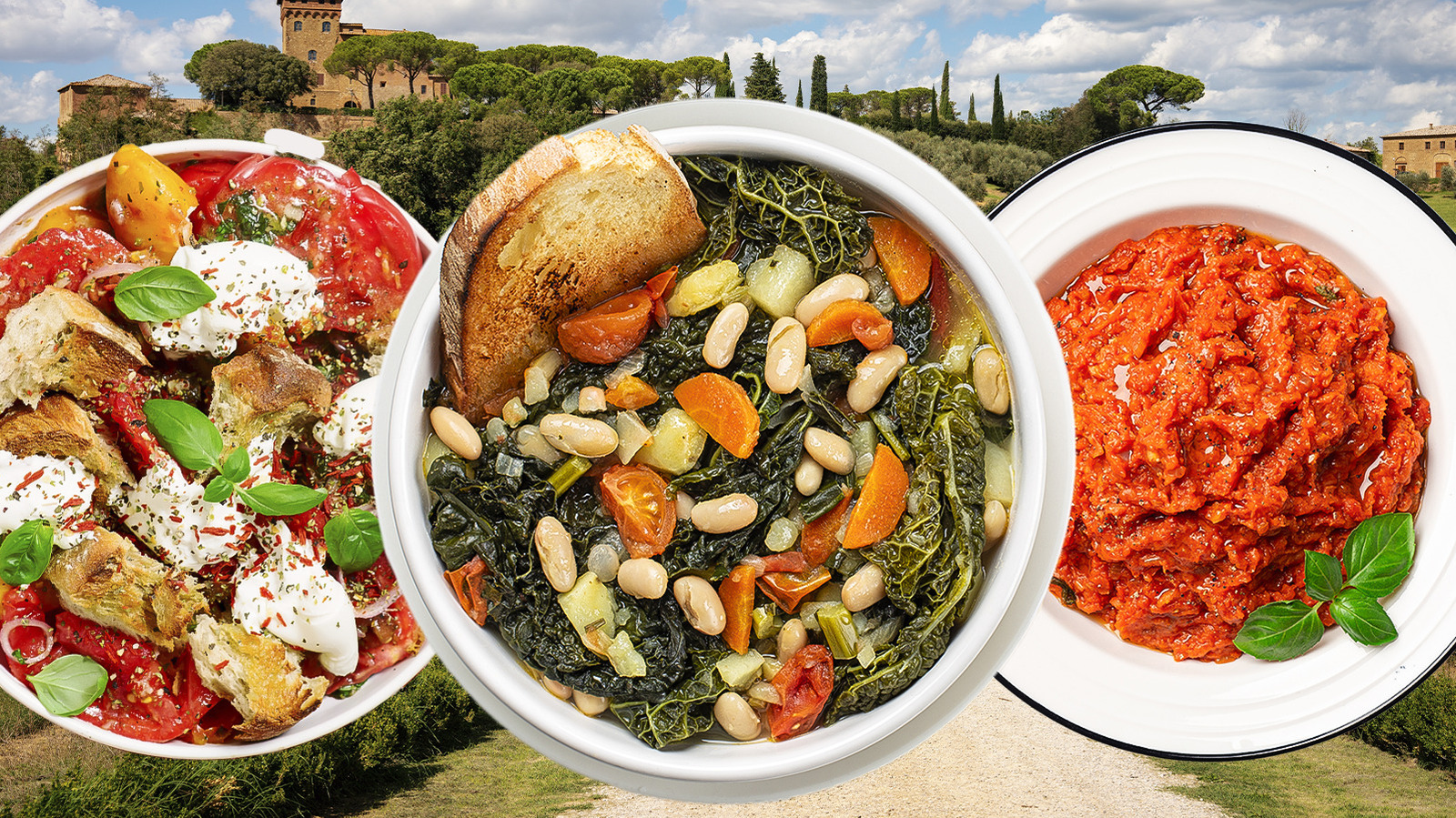
"When you think of Italian cuisine, we'll hazard a guess that two things pop straight into your mind: pasta and pizza. After that, it's probably gelato, or maybe tiramisu. But one of the best things about Italy and its food is how incredibly diverse it is. Each region in Italy has its own range of signature dishes. Sicily is famous for its arancini and cannoli, for example, while Lazio (home to the capital of Rome) is synonymous with carbonara and cacio e pepe, and Calabria is renowned for 'nduja. But here, we're looking specifically at the incredible variety of Tuscan cuisine."
"Like many dishes from the Tuscan region, panzanella is an example of cucina povera. This style of cooking, which translates to "poor kitchen," originated with the Italian peasant population, and is defined by making the best of simple, local ingredients and leftovers. That's why the star of this famous Italian salad is stale, dry bread. When that bread is combined with ingredients like olive oil, vinegar, basil, onions, cucumbers, salt, pepper, and lots of juicy fresh tomatoes, it becomes a soft, hearty vehicle for lots of rich, delicious flavor."
Tuscan cuisine emphasizes regional diversity, local ingredients, and rustic culinary traditions. The region produces a wide array of dishes from simple, peasant-origin recipes to refined local specialties. Panzanella demonstrates cucina povera by turning stale bread into a summer salad with olive oil, vinegar, basil, onions, cucumbers, and ripe tomatoes. Panzanella originated in Florence and predated widespread tomato use, historically featuring purslane and onions with bread. Other Tuscan specialties such as gnudi and panforte reflect the region's focus on vegetable-forward, seasonally driven, and historically rooted flavors.
Read at Tasting Table
Unable to calculate read time
Collection
[
|
...
]